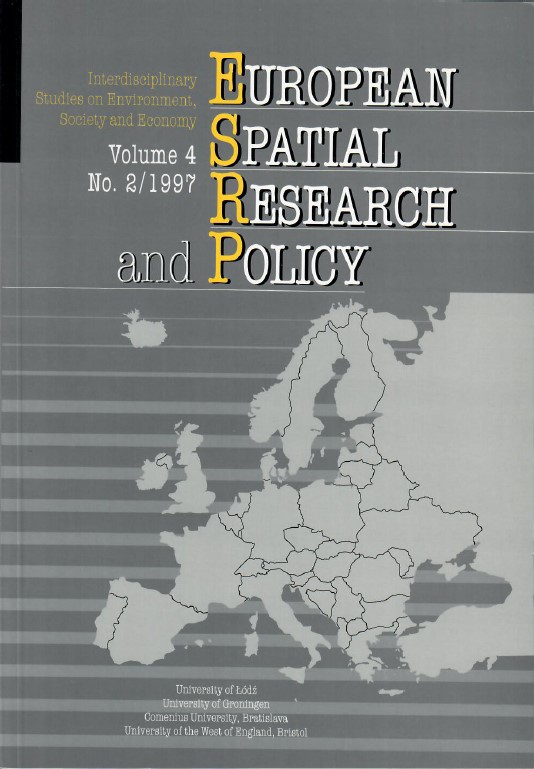Achievements and conflicts of modernisation in Hungary
DOI:
https://doi.org/10.18778/1231-1952.4.2.03Keywords:
economic restructuring, economic growth and balance, privatisation, regional differentiation, regional policyAbstract
Socio-economic modernisation of ex-Soviet-Block countries means both an adaptation to the Western democracies and an effort to decrease econornic differences. lt requires socio-econornic restructuring, growth and the maintenance of a delicate balance - all simultaneously. The 1989-1996 period of transition in Hungary is characterised by potentially connicting objectives, changing priorities, and necessarily concurrent processes becoming sequential. Democratisation has made power-sharing between the central and local governments an issue. Creating a market economy is expensive. The process touches on questions of national sovereignty, causing conflicts between foreign and domestic interests, end leads to social, economic and regional differentiation and polarisation.
Downloads
References
CZAKÓ, Á. and SIK, E. (1995), A hálózati főke szerepe Magyarországon a rendszerváltás előtt és után (The role of the network capital before and after the system change), "2000": 2.
Google Scholar
DICKEN, P. and QUÉVIT, M. (eds), (1994), Foreign investment in the Hungarian economy: the role of transnational companies, [in:] Transnational corporations and European regional restructuring, Netherland Geographical Studizes, Utrecht.
Google Scholar
EHRLICH, É., RÉVÉSZ, G. and TAMÁSI, P. (eds), (1994), Kelet-Közép Európa: Honnan-hová? (Eastern-Central Europe: from where to where?), Budapest: Akadémiai Kiadó.
Google Scholar
ENYEDI, G. (1994), Regional and urban development in Hungary until 2000, [in:] HAJDÚ, Z. and HORVÁTH, G. (eds), European challenges and Hungarian responses in regional policy, Pécs: HAS Centre for Regional Studies.
Google Scholar
ILLES, I. (1996), A magyar regionális politika az Európai Uiós tagságra való felkészülés időszakában (The Hungarian regional policy in preparation to enter the European Union), manuscript, Budapest: Centre for Regional Studies.
Google Scholar
INOTAI, A. (ed.), (1995), Tudósok a modernizációról és az európai integrációról (Scientists about the modernisation and the European integration), Working Paper, MTA.
Google Scholar
KIRÁLY, J. (1989), Kollektív vagy egyéni racionalitás? (lndividual or collective rationality?), "Közgazdasági Szemle'', 2.
Google Scholar
KORNAI, J. (1996), Négy jellegzetesség: A magyar fejlődés politikai gazdaságtani megközelítésben. Második rész. (Four characteristics: the Hungarian development from the political-economical approach. Second part, "Közgazdasági Szemle", 1.
Google Scholar
LAKY, T. (1995), A magángazdaság kialakulása és a foglalkoztatottság (The formation of the private economy and the employment), "Közgazdasági Szemle", 7/8.
Google Scholar
SZELÉNYI, I. (1994), Circulation of elites in post-communist transition, Working Paper, 3, University of Michigan, Advanced Study Center, lnternational lnstitute.
Google Scholar
TÓTH, I. G. (1994), A jóléti rendszer az átmenet időszakában (The welfare system in the period of transition), "Közgazdasági szemle", 3.
Google Scholar
Downloads
Published
How to Cite
Issue
Section
License

This work is licensed under a Creative Commons Attribution-NonCommercial-NoDerivatives 4.0 International License.














